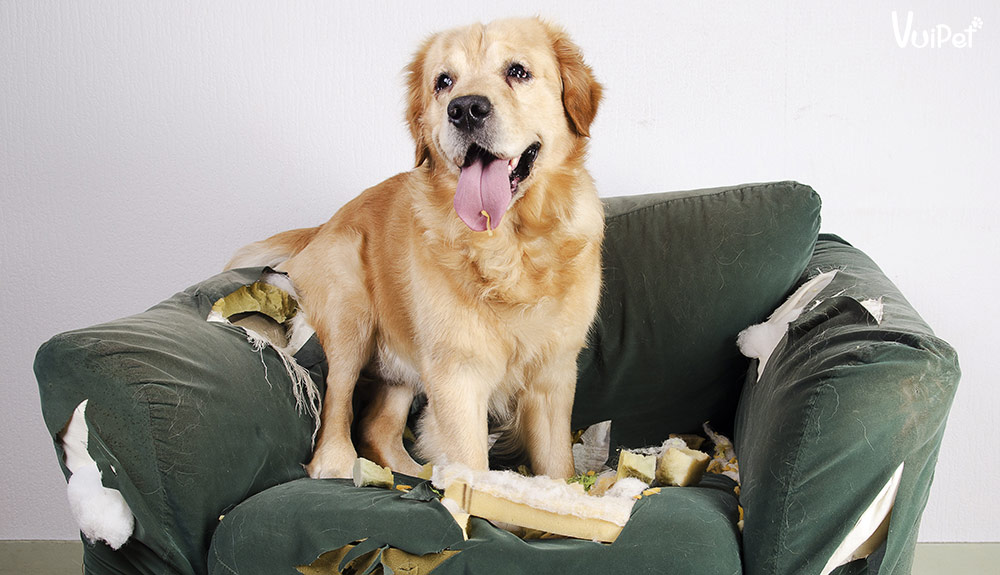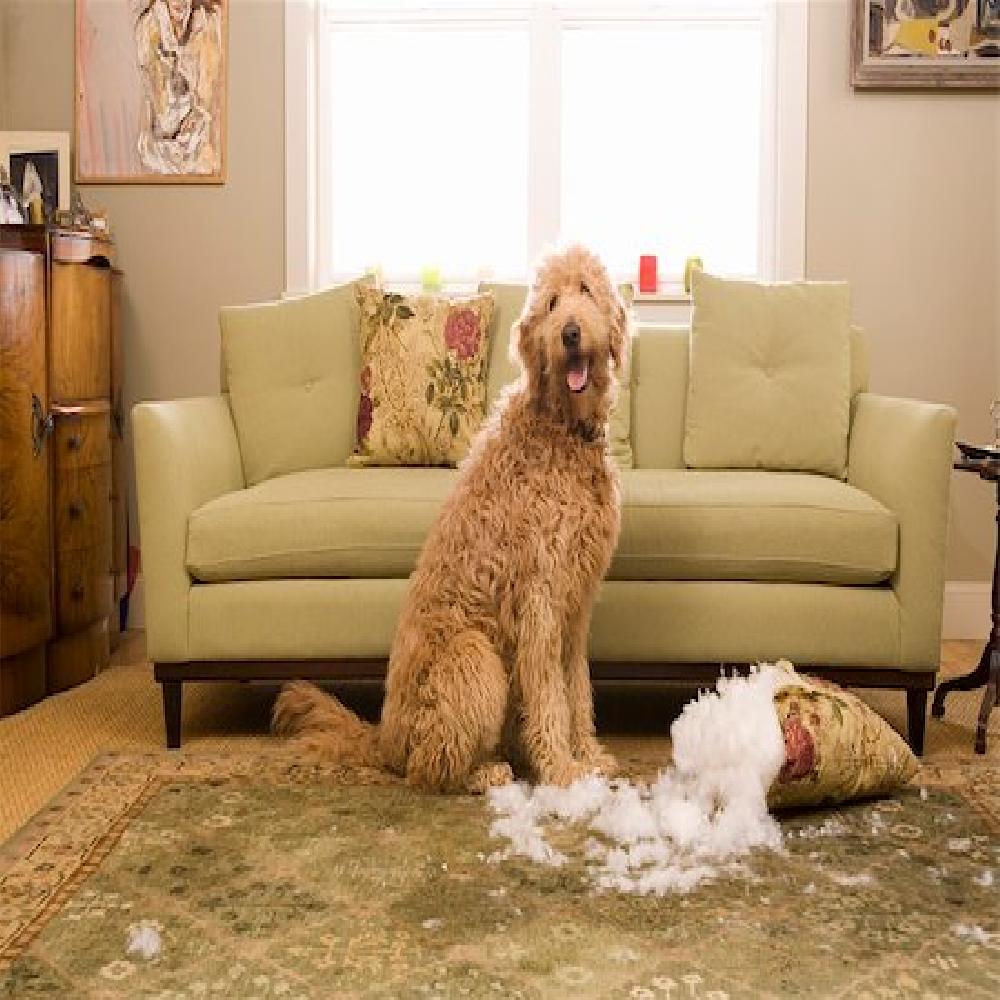Are you tired of coming home to find your furniture chewed, scratched, or covered in fur? Do you constantly have to replace or repair your belongings because of your furry companions? If so, you’re not alone. Many pet owners struggle with keeping their dogs and cats from destroying furniture in the house. But fear not, there is a secret to preventing this destructive behavior. In this article, we will explore the best methods for keeping your pets from ruining your furniture and maintaining a harmonious living space.

Understanding Why They Do It
Before we dive into the solutions, it’s important to understand why dogs and cats may resort to destroying furniture in the first place. Both species have natural instincts that drive them to chew, scratch, and mark their territory. For dogs, chewing is a way to explore and relieve stress, while cats scratch to sharpen their claws and mark their territory. However, these behaviors can become problematic when directed towards our furniture.
Chewing Behavior in Dogs
Dogs are known for their love of chewing. Whether they’re teething puppies or adults with a strong urge to gnaw, it’s important to provide them with appropriate outlets for this behavior. If not, they may turn to your furniture as a chew toy. This can be caused by boredom, anxiety, or lack of proper training.
Scratching Behavior in Cats
Cats, on the other hand, are notorious for their scratching behavior. While it may seem like they’re purposefully trying to ruin your furniture, they are simply following their natural instincts. By scratching, they are marking their territory, stretching their muscles, and removing dead outer layers of their claws. However, this can also cause damage to your furniture if not addressed.
Prevention Techniques

Now that we understand the reasons behind our pets’ destructive behavior, let’s explore some techniques to prevent it.
1. Provide Appropriate Toys and Scratching Posts
One of the best ways to redirect your pet’s chewing and scratching behavior is to provide them with appropriate toys and scratching posts. This will give them an outlet for their natural instincts and keep them occupied. Invest in sturdy, durable toys for your dog to chew on, such as rubber bones or nylon toys. For your cat, offer a variety of scratching posts made from different materials, such as sisal rope or cardboard.
How to Use:
Introduce the new toys and scratching posts gradually and encourage your pet to use them by playing with them yourself. You can also try sprinkling catnip on the scratching post to attract your cat to it. Consistency is key, so make sure to praise and reward your pet whenever they use the designated items instead of your furniture.
Example:
I recently adopted a high-energy Labrador retriever who loves to chew on everything in sight. To prevent him from destroying my furniture, I purchased a variety of chew toys, including a Kong toy, which has become his favorite. Now, whenever he gets the urge to chew, he automatically goes for his Kong instead of my couch.
2. Keep Your Pets Active and Mentally Stimulated
Another way to prevent destructive behavior is to make sure your pets are getting enough exercise and mental stimulation. Boredom can lead to destructive behavior, so it’s important to keep your pets active and engaged. Take your dog for daily walks or runs, play fetch in the backyard, or enroll them in obedience classes. For cats, provide plenty of interactive toys and playtime, such as laser pointers or wand toys.
How to Use:
Make sure to establish a routine for exercise and playtime, so your pets know when to expect it. You can also rotate their toys and activities to keep things interesting and prevent boredom.
Example:
My cat, Mittens, used to scratch my couch out of boredom. I started incorporating daily playtime with her favorite feather wand toy and noticed a significant decrease in her destructive behavior. Now, she has a variety of toys that I rotate weekly to keep her mentally stimulated.
3. Proper Training and Reinforcement

Training is crucial for preventing destructive behavior in both dogs and cats. Teaching your dog basic obedience commands, such as “leave it” or “drop it,” can help redirect their attention when they attempt to chew on furniture. For cats, you can use a deterrent spray on the furniture or make loud noises whenever they begin scratching. It’s important to be consistent and patient with training, as it takes time for your pets to learn new behaviors.
How to Use:
Use positive reinforcement techniques, such as treats and praise, to reward your pet for good behavior. This will encourage them to continue the desired behavior over time.
Example:
When I first got my rescue cat, Luna, she would constantly scratch at my curtains. I used a deterrent spray on the fabric and taught her the “no” command whenever she approached the curtains. With consistent training and rewards, she now avoids the curtains completely.
4. Protect Your Furniture
If all else fails, there are ways to protect your furniture from your pets’ destructive behavior. You can invest in pet-proof covers for your couches and chairs, or place plastic mats over areas where your cat likes to scratch. Another option is to apply double-sided tape or a citrus-scented spray to areas where your pets have targeted.
How to Use:
Make sure to properly secure the covers or mats in place and reapply the deterrent sprays regularly. You can also try adding a scratching post near the protected area to give your cat an alternative.
Example:
My dog, Max, loves to sleep on the couch, but his nails can cause damage to the fabric. I bought a pet-proof cover that secures around the couch and has a waterproof backing to protect it from any accidents. Now, Max can still enjoy his naps on the couch without causing any damage.
5. Seek Professional Help

If your pets’ destructive behavior continues or becomes severe, it may be necessary to seek professional help. A certified animal behaviorist can assess your pet’s behavior and provide tailored solutions for their specific needs. They can also identify any underlying issues that may be contributing to the destructive behavior.
How to Use:
Research and consult with a reputable animal behaviorist in your area. Be prepared to provide detailed information about your pet’s behavior, such as triggers, frequency, and any previous attempts at training.
Example:
My neighbor’s cat, Whiskers, was constantly scratching at their furniture despite having multiple scratching posts and toys. They consulted with an animal behaviorist who discovered that Whiskers was experiencing separation anxiety when left alone in the house. With a combination of behavior modification techniques and medication, Whiskers’ destructive behavior significantly decreased.
Conclusion
In conclusion, the secret to keeping dogs and cats from destroying furniture in the house lies in understanding their natural instincts and providing them with appropriate outlets for those behaviors. By following these prevention techniques, you can maintain a harmonious living space with your furry companions. Remember to be patient and consistent with training, and seek professional help if needed. With dedication and proper training techniques, your pets can learn to coexist peacefully with your furniture.